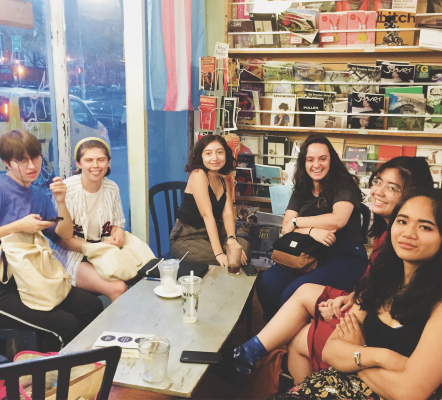SAGES Hosts “The People’s History of Fordham”
SAGES organized to educate the Fordham community about its past with protests. (ELIZA PUTNAM/THE OBSERVER)
October 10, 2018
Due to popular demand, the Students for Sex and Gender Equity and Safety (SAGES) Coalition organized an additional Fordham Disorientation to discuss elements of Fordham’s history that members believe are not well known, intentionally suppressed by the university or lost in time. Disorientaion II occurred Oct. 3 in a law school lecture room on Fordham’s Lincoln Center (FLC). Designated “The People’s History of Fordham University,” students in the unofficial club spoke about diverse subjects including Fordham’s connection to Robert Moses, the college’s gender-based dorm visitation policy and student activism on campus.
The event’s presentation brought special attention to Fordham’s past regarding social justice, paying close attention to protests (both official and unofficial) on the university’s campuses. Examples stretched as far back as anti-Vietnam War protests in the 1960s and forward to present-day protests still fresh in students’ minds like the fight for a Students for Justice in Palestine (SJP) club, the 2017 vote of no confidence on University President Rev. Joseph M. McShane, S.J.’s leadership and various anti-racist, pro-LGBTQ and anti-sexual violence rallies in the recent past.
Samantha Norman, FCLC ’18, spoke to The Observer about the importance of SAGES’ work on campus. “One of the core understandings that motivates SAGES is that university administrations rely on stall tactics to defer and deny student power,” she said. “Students will realize in their first or second year that their school’s administration…will facilitate the successes of wealthy students while ignoring students who cannot pay fee after fee without accruing debt, and will outright deny [minority students] the resources they are promised when they sign a contract with the university and start to obtain their degree.”
Norman explained that the purpose of this Disorientation was to inform students of the history of student protest at Fordham in order to preserve the effects of such protests beyond the four years students spend at the university. “The problems don’t disappear and we need to know what students have done before us in order to effectively organize and achieve the school we pay for.”
Attendees ranged from freshmen to law school students and alumni. The gathering took the form of an informal conversation where everyone, including presenters, sat around a table.
Anyone could ask questions or add to the topic during and after each segment. During presentations, a sign-up sheet was passed around for The Positive II, a student-run organization dedicated to addressing social justice issues, in addition to a flyer with a number to text for free condoms.
Future Disorientation events are in the works, Norman told The Observer, as a follow-up to the popularity of the first two gatherings this year. An ongoing institutional history project expanding on Disorientation II’s topic is in the works to release online this fall.










